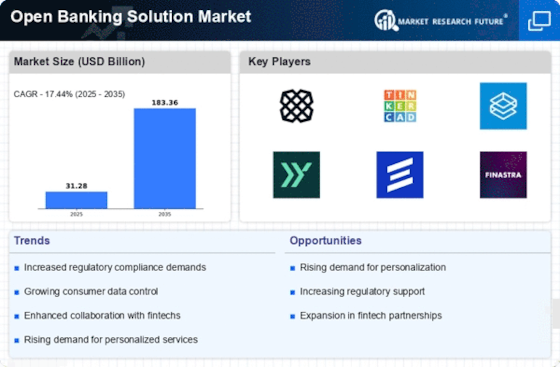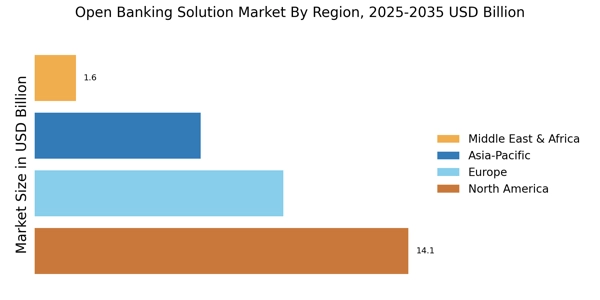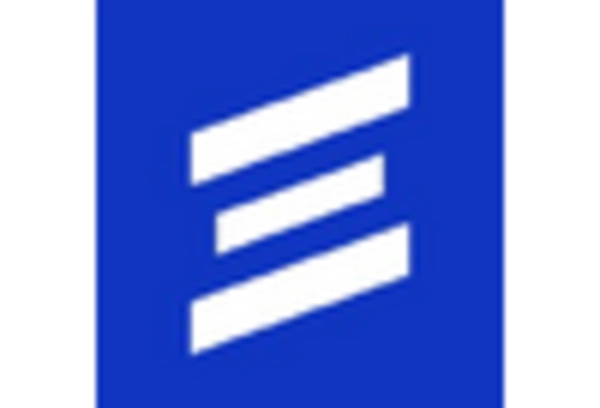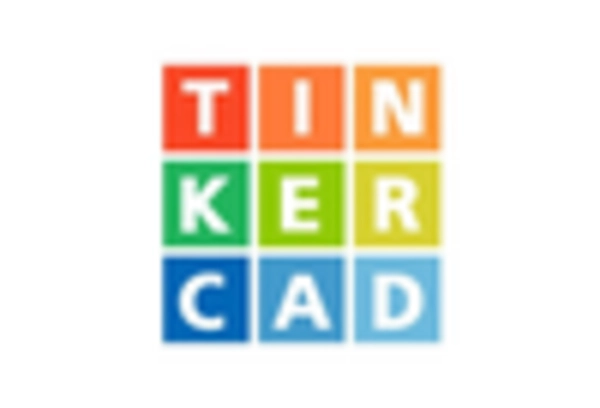The Open Banking Solution Market is currently characterized by a dynamic competitive landscape, driven by rapid technological advancements and increasing consumer demand for personalized financial services. Key players such as Plaid (US), Tink (SE), and TrueLayer (GB) are at the forefront, leveraging their innovative capabilities to enhance user experiences and expand their service offerings. These companies are strategically positioned to capitalize on the growing trend of digital transformation in the financial sector, focusing on partnerships and integrations that facilitate seamless access to financial data. Their collective efforts not only foster competition but also contribute to a more interconnected financial ecosystem, where collaboration often supersedes traditional competitive practices.
In terms of business tactics, companies in the Open Banking Solution Market are increasingly localizing their services to cater to regional regulatory requirements and consumer preferences. This approach appears to be essential in a moderately fragmented market, where the influence of key players is significant yet varied. The competitive structure is shaped by a mix of established firms and emerging startups, each vying for market share through innovative solutions and strategic partnerships. The emphasis on supply chain optimization and localized service delivery is likely to enhance operational efficiency and customer satisfaction across the board.
In September 2025, Plaid (US) announced a strategic partnership with a leading fintech firm to enhance its API offerings, aiming to streamline the integration process for developers. This move is indicative of Plaid's commitment to fostering innovation and simplifying access to financial data, which could potentially strengthen its market position against competitors. By enhancing its API capabilities, Plaid is likely to attract a broader range of clients, thereby solidifying its role as a key player in the Open Banking landscape.
In August 2025, Tink (SE) expanded its operations into the Nordic region, launching new services tailored to local financial institutions. This expansion reflects Tink's strategy to capitalize on the growing demand for open banking solutions in Europe. By localizing its offerings, Tink not only addresses specific market needs but also positions itself as a regional leader, potentially outpacing competitors who may not have the same level of localized service.
In July 2025, TrueLayer (GB) secured a significant investment to enhance its technology infrastructure, focusing on AI-driven analytics to improve customer insights. This investment underscores TrueLayer's commitment to leveraging advanced technologies to differentiate its offerings in a crowded market. By integrating AI capabilities, TrueLayer is likely to provide more personalized services, thereby enhancing customer engagement and loyalty.
As of October 2025, the Open Banking Solution Market is witnessing a shift towards digitalization, sustainability, and AI integration, which are defining current competitive trends. Strategic alliances among key players are increasingly shaping the landscape, fostering innovation and collaboration. Looking ahead, it appears that competitive differentiation will evolve from traditional price-based competition to a focus on technological innovation, customer-centric solutions, and supply chain reliability. This shift may ultimately redefine how companies compete, emphasizing the importance of agility and adaptability in a rapidly changing market.


















Leave a Comment